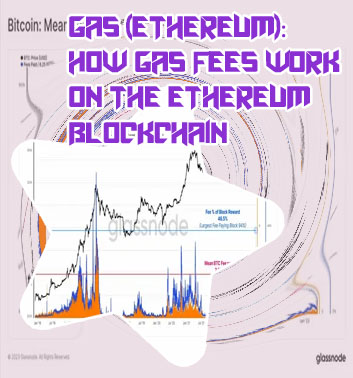
Crypto gas fees meaning
Understanding Crypto Gas Fees: A Beginner's Guide
What Are Crypto Gas Fees and How Do They Work?

Cryptocurrency transactions require a certain amount of computational power to be processed on the blockchain network. This computational power is provided by miners who validate and secure transactions on the network. Gas fees are essentially the cost of this computational work.
Gas fees are paid in cryptocurrency and are used to incentivize miners to include transactions in the blockchain. The higher the gas fee, the more likely it is that a transaction will be processed quickly. Gas fees can vary depending on network congestion and the complexity of the transaction.
To understand how gas fees work, it is important to know that each operation on the blockchain network requires a certain amount of gas. For example, sending a simple transaction may require less gas than executing a smart contract. Gas fees are calculated based on the amount of gas needed to complete a transaction and the current gas price.
For traders and investors, understanding gas fees is crucial when buying, selling, or transferring cryptocurrencies. High gas fees can eat into profits, especially when making frequent transactions. Therefore, it is important to keep an eye on gas fees and adjust transaction strategies accordingly.
In conclusion, gas fees play a vital role in the functioning of cryptocurrency networks. Understanding how gas fees work is essential for anyone involved in the crypto space, from traders to developers. By being aware
Top Strategies to Minimize Crypto Gas Fees
Cryptocurrency transactions can often come with high gas fees, which can eat into your profits and make trading less lucrative. However, there are several strategies that you can employ to minimize these fees and maximize your returns.
One effective strategy is to simply avoid peak times for transactions on the blockchain. Gas fees tend to be higher during times of high network activity, so by waiting for off-peak hours, you can save money on fees. Additionally, you can use gas fee tracking tools to monitor gas prices and choose the right time to make your transactions.
Another strategy is to use layer 2 solutions, such as sidechains or payment channels, which can help reduce the load on the main blockchain and lower gas fees. By using these solutions, you can benefit from faster and cheaper transactions while still enjoying the security of the main blockchain.
One practical use case for minimizing gas fees is a trader who used gas fee tracking tools to wait for a dip in prices before making a large transaction. By being patient and strategic, they were able to save a significant amount of money on fees and increase their overall profits.
By implementing these strategies and staying informed about gas prices, you can minimize your crypto gas fees and make the most of your trading activities.
The Impact of Crypto Gas Fees on the Ethereum Network
The surge in crypto gas fees on the Ethereum network has had a profound impact on users and developers alike. Gas fees refer to the transaction fees required for executing operations on the Ethereum blockchain. As the network experiences increased demand, these fees have skyrocketed, leading to challenges such as high costs and slower transaction times.
-
Increased Costs: The rise in gas fees has made it expensive for users to perform even simple transactions on the Ethereum network. This has resulted in a barrier for entry for smaller investors and traders.
-
Network Congestion: The high gas fees have also contributed to network congestion, causing delays in transaction confirmations and overall network performance. Developers are finding it increasingly difficult to build decentralized applications (dApps) on Ethereum due to these limitations.
-
Scalability Issues: The scalability of the Ethereum network has come into question as a result of the gas fee problem. With limited processing power and increasing demand, the network is struggling to keep up with the growing number of transactions.
-
Search for Solutions: In response to these challenges, developers and researchers are actively seeking solutions to address the issue of high gas fees on Ethereum. Proposed upgrades such as Ethereum 2.0 aim to improve scalability and reduce fees through the implementation of a proof-of-stake consensus mechanism.
Crypto Gas Fees: Exploring Solutions for High Transaction Costs
In the world of cryptocurrency, one of the biggest challenges that users face is the issue of high transaction fees, also known as gas fees. These fees can often be exorbitant, especially during times of high network congestion, making it costly for users to conduct even the simplest transactions.
Fortunately, there are several solutions being explored to help alleviate the burden of high gas fees. One potential solution is the implementation of layer 2 scaling solutions, such as the Lightning Network for Bitcoin or the Raiden Network for Ethereum. These off-chain solutions aim to reduce the number of transactions that need to be processed on the main blockchain, thereby reducing the overall cost of transactions.
Another possible solution is the use of automated market makers (AMMs) to help optimize gas fees. By using smart contracts to automatically adjust fees based on network congestion, AMMs can help ensure that users are paying a fair price for their transactions.
Overall, the issue of high gas fees is a significant hurdle that the cryptocurrency community must overcome in order to achieve mainstream adoption. By exploring innovative solutions such as layer 2 scaling and automated market makers, we can help make transactions more affordable and accessible for users around the world.